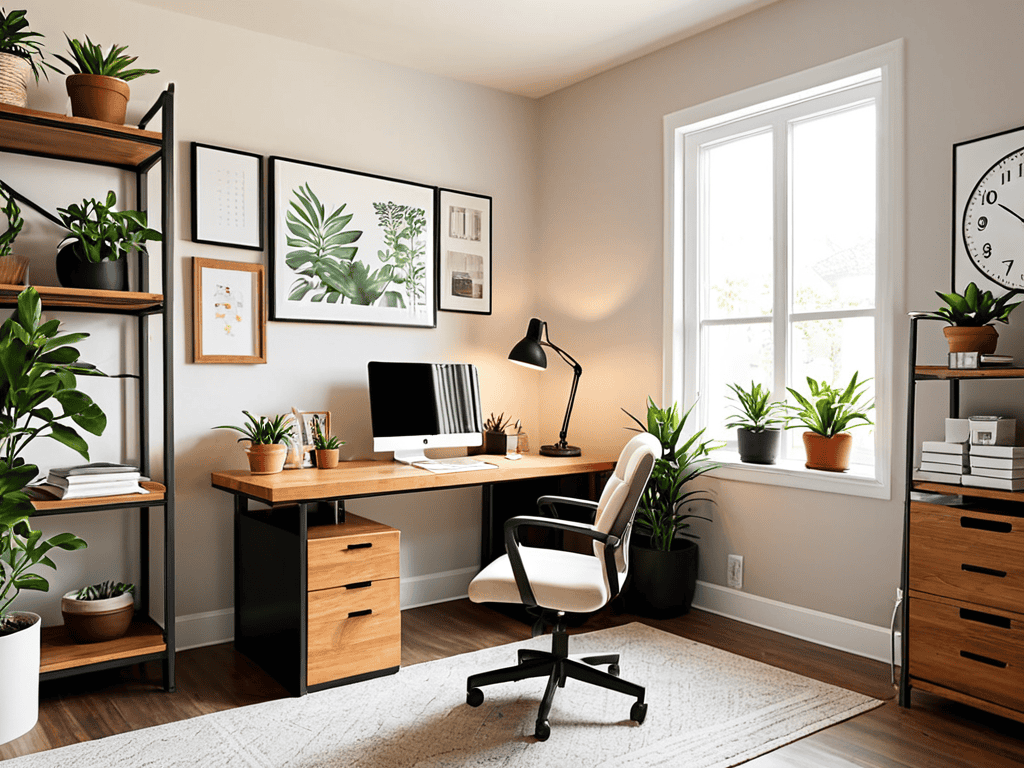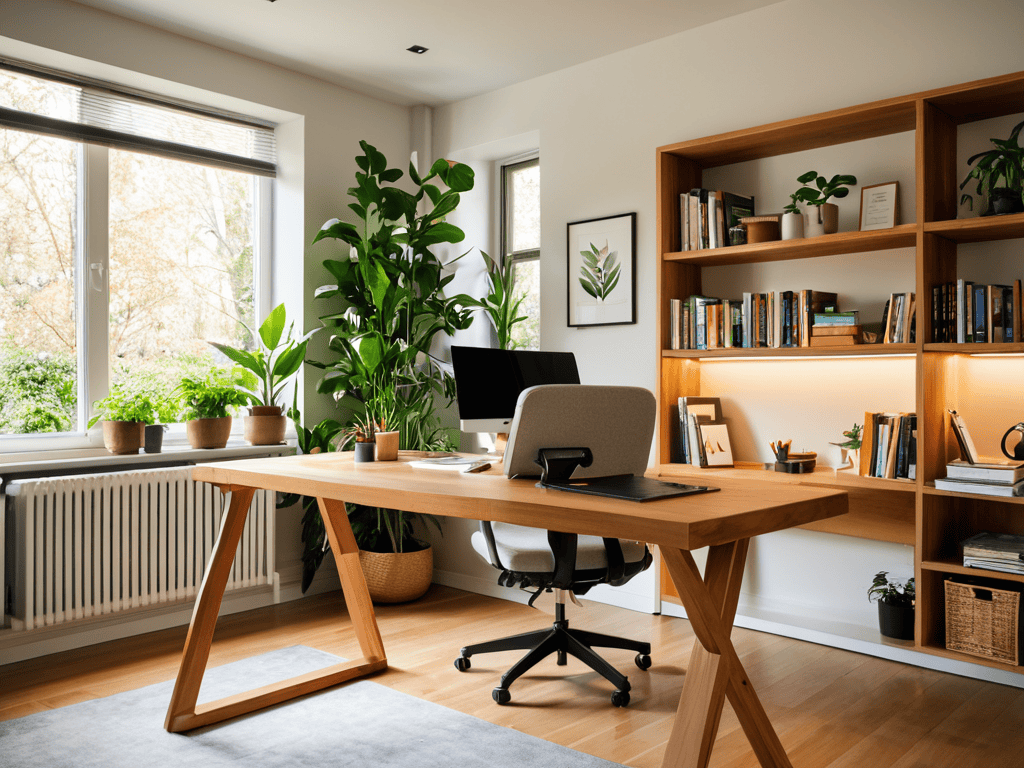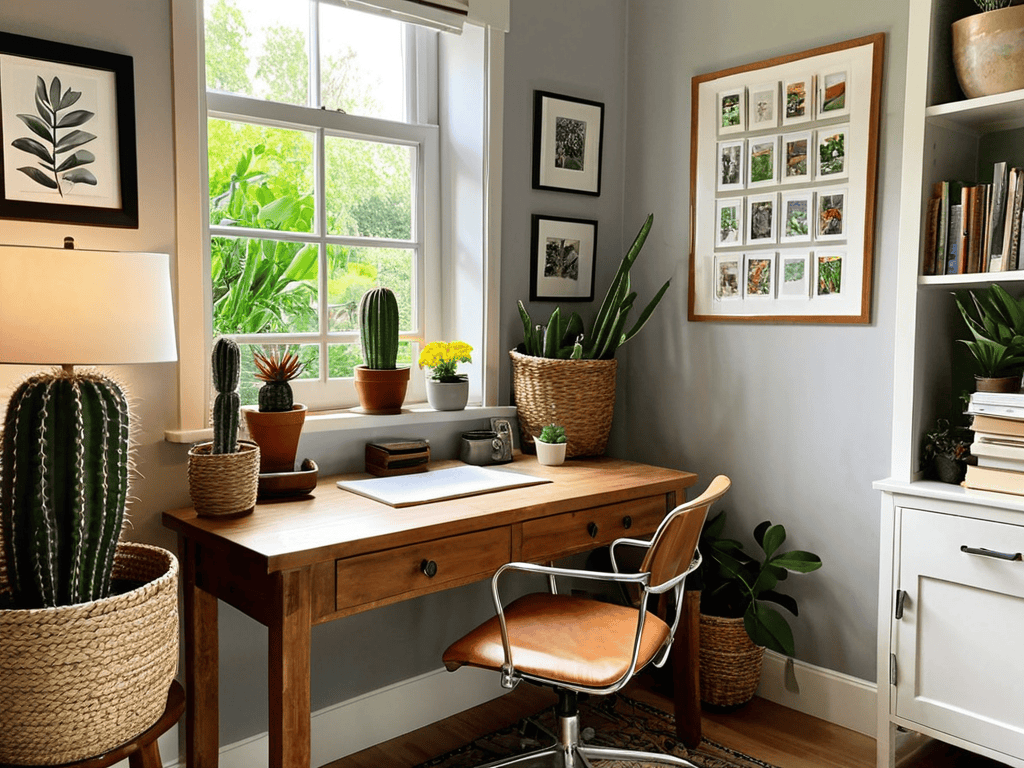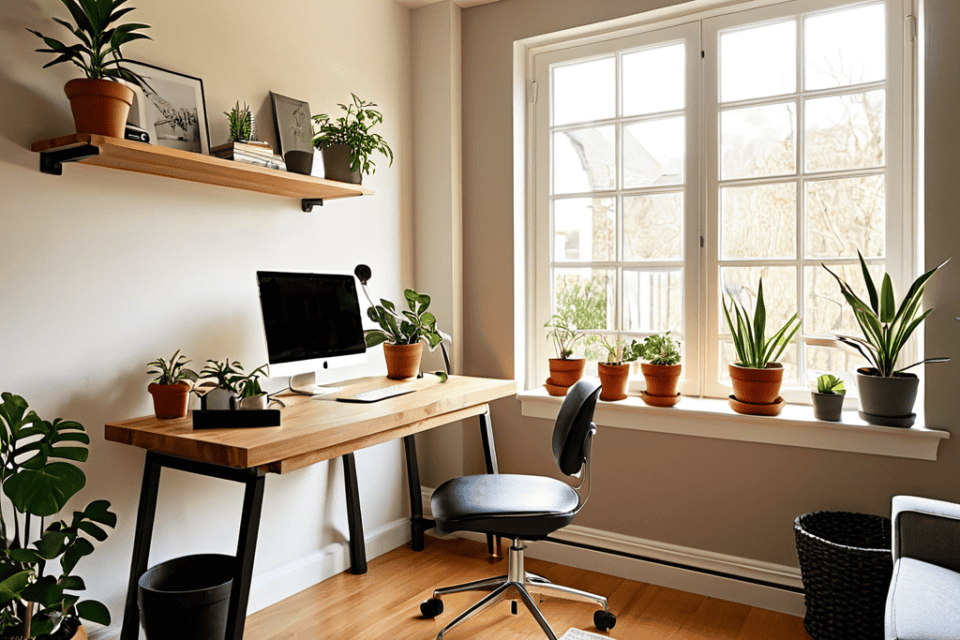I still remember the day I decided to ditch my cramped, cluttered home office and start from scratch. I was determined to learn how to create a productive and ergonomic home office setup that would actually help me get work done. As I began researching, I realized that most advice out there is focused on creating a space that looks good, not one that actually functions well. It’s time to debunk the myth that a productive home office has to be expensive or luxurious – in reality, it’s all about creating a space that _works for you_.
In this article, I’ll share my personal, no-nonsense approach to crafting a home office that fuels your creativity and productivity. You’ll learn how to identify your specific needs, choose the right furniture, and create a layout that promotes ergonomic comfort. I’ll cut through the hype and provide you with practical, actionable tips to transform your workspace into a haven that helps you stay focused and motivated. By the end of this guide, you’ll be equipped with the knowledge to create a home office that is both functional and beautiful, and that helps you achieve your goals.
Table of Contents
Guide Overview: What You'll Need

Total Time: 2 hours 30 minutes
Estimated Cost: $100 – $300
Difficulty Level: Intermediate
Tools Required
- Tape Measure for measuring workspace
- Level to ensure proper monitor and desk alignment
- Pencil and Paper for planning the layout
- Drill for assembling furniture if necessary
- Wrench for adjusting chair height and other furniture
Supplies & Materials
- Ergonomic Chair with adjustable height and lumbar support
- Desk at a comfortable height, approximately 29 inches to 30 inches tall
- Monitor Risers to position screens at eye level
- Keyboard Tray for proper hand positioning
- Good Lighting table lamps or floor lamps for adequate illumination
- Plants for air quality and aesthetic purposes
- Noise-Cancelling Headphones for minimizing distractions
- Comfortable Flooring such as a mat for standing desks or a rug for noise reduction
Step-by-Step Instructions
- 1. First, let’s start by assessing your space. Take a good look around the area where you plan to set up your home office. Consider the natural light, the noise level, and the overall vibe of the space. Think about how you can utilize the space to create a comfortable and functional work area. Maybe you need to rearrange some furniture or add some plants to make the space more inviting.
- 2. Next, invest in a good ergonomic chair. Your chair is going to be your best friend when you’re working from home, so make sure it’s comfortable and supportive. Look for a chair with adjustable height, lumbar support, and a breathable fabric. Don’t be afraid to splurge a bit on a high-quality chair, as it will pay off in the long run. A good chair can help prevent back and neck pain, and even improve your overall productivity and focus.
- 3. Now, let’s talk about your desk setup. You’ll want to choose a desk that’s the right size for your space and your needs. Consider a desk with built-in cable management to keep your workspace clutter-free and organized. Think about the type of work you’ll be doing and the equipment you’ll need to have within easy reach. Maybe you need a standing desk or a sit-stand workstation to stay active and energized throughout the day.
- 4. Proper lighting is essential for a productive home office. Natural light is always the best option, but if that’s not possible, invest in some good quality LED light bulbs. Avoid harsh overhead lighting, which can cause eye strain and headaches. Instead, opt for soft, warm lighting that creates a cozy and inviting atmosphere. Consider using table lamps or floor lamps to create a warm glow and add some visual interest to your space.
- 5. It’s time to think about storage and organization. A cluttered workspace can be distracting and overwhelming, so it’s essential to have a system in place to keep your office supplies and paperwork organized and out of sight. Consider investing in a file cabinet, bookshelves, or storage bins to keep your office supplies and paperwork tidy. Label each storage unit so you can easily find what you need, and make sure to purge any unnecessary items that are just taking up space.
- 6. Now, let’s not forget about technology and equipment. You’ll need a reliable computer, a good internet connection, and a noise-cancelling headset for video calls. Consider investing in a high-quality printer and scanner if you need to print and scan documents regularly. Make sure your equipment is up-to-date and compatible with your software and other devices. Don’t forget to backup your data regularly to prevent losing important files and documents.
- 7. Finally, add some personal touches to make your home office feel like your own. Hang some inspirational quotes or funny posters on the walls, add some colorful rugs and plants, and make sure your space reflects your personality and style. Consider displaying some personal mementos or family photos to make your space feel more welcoming and inviting. Remember, your home office should be a space that inspires and motivates you to be your best self.
Ergonomic Home Office

When designing an ergonomic home office, it’s essential to consider the physical and mental well-being of the user. This involves selecting furniture and equipment that promote good posture and reduce eye strain. For instance, an ergonomic desk height adjustment can make a significant difference in comfort and productivity. By allowing the user to switch between sitting and standing throughout the day, they can stay focused and avoid fatigue.
To further enhance the home office experience, noise cancelling headphones for office work can be a game-changer. These headphones can help block out distracting sounds and create a more concentrated work environment. Additionally, using productivity apps for remote work can help individuals stay organized and on track, even when working from home. By minimizing digital distractions and creating a comfortable workspace, individuals can achieve a better work-life balance.
In terms of home office decor inspiration, it’s crucial to create a space that sparks creativity and motivation. This can be achieved by adding plants, artwork, or other personal touches that reflect the user’s personality. By investing in a standing desk conversion option, individuals can also take their ergonomic home office to the next level, promoting better health and productivity.
Elevating Productivity With Standing Desks
Standing desks can be a game-changer for your home office. By switching between sitting and standing, you can boost your energy levels and stay focused. This simple adjustment can help you avoid the sedentary trap and keep your creativity flowing. Plus, standing desks promote better posture, reducing the risk of back and neck pain.
Investing in a standing desk can be a great way to elevate your productivity and overall well-being. Look for one that’s sturdy, adjustable, and fits your work style. With a standing desk, you’ll be able to work comfortably, move freely, and stay motivated throughout the day.
Minimizing Distractions With Noise Cancelling
To take your ergonomic home office to the next level, consider investing in noise-cancelling solutions. This can be as simple as noise-cancelling headphones or as complex as soundproofing your entire room. By minimizing external distractions, you can focus on the task at hand and maintain a consistent workflow. Noise-cancelling headphones, in particular, are a versatile and affordable option, allowing you to tune out background noise and concentrate on your work.
By reducing ambient noise, you can also reduce stress and mental fatigue, creating a more peaceful and productive work environment. This, in turn, can help you stay motivated and inspired, leading to higher quality work and a better work-life balance.
5 Essential Elements to Supercharge Your Home Office
- Designate a dedicated workspace that is quiet, comfortable, and free from clutter to help you stay focused
- Invest in a high-quality, ergonomic chair that provides adequate lumbar support and adjusts to fit your body
- Position your computer monitor at a distance of about 20-25 inches, directly in front of you, and at a height that allows you to gaze slightly downward
- Consider using a document holder to keep your papers at eye level, reducing the need to constantly look down and relieving strain on your neck
- Prioritize good lighting in your home office, using a combination of natural and artificial light sources to create a well-lit, inviting space that boosts your mood and productivity
Key Takeaways for Your Dream Home Office
Design your home office with both productivity and ergonomics in mind to create a space that boosts your creativity and reduces physical strain
Incorporate tools and furniture like noise-cancelling equipment and standing desks to minimize distractions and elevate your work experience
Remember, the key to a successful home office is finding a balance between comfort, functionality, and personal style to make your work-from-home experience enjoyable and effective
Designing Your Sanctuary
A well-crafted home office is not just a space, it’s a catalyst for creativity, productivity, and growth – where every element, from the chair to the lighting, is a deliberate choice to nurture your best self.
Maya Rose
Bringing It All Together

As you’re putting the final touches on your home office setup, don’t forget to think about the little things that can make a big difference in your productivity and comfort. For instance, having a few inspirational quotes or fun decorations can really help create a welcoming atmosphere. If you’re looking for some creative ideas to take your space to the next level, I highly recommend checking out hobbyladies for some amazing DIY projects and tips on how to add a personal touch to your workspace. By doing so, you’ll not only make your home office more enjoyable to be in, but you’ll also be able to express your personality and make the space truly feel like your own.
As we’ve explored the world of creating a truly productive and ergonomic home office setup, it’s clear that minimizing distractions and maximizing comfort are key. From the initial setup to incorporating tools like noise-cancelling technology and standing desks, every element plays a crucial role in fostering an environment that nurtures creativity and efficiency. By focusing on these elements, you’re not just building a workspace – you’re crafting a haven that fuels your passion and helps you achieve your goals.
So, as you embark on this journey to transform your home office into a sanctuary of productivity, remember that it’s all about striking a balance between functionality and personal touch. Your space should inspire you to be your best self, every day. With these insights, go forth and create a home office that doesn’t just get the job done, but makes you feel alive and eager to take on new challenges.
Frequently Asked Questions
What are the most essential components to include in a home office setup for maximum productivity?
To boost productivity, focus on the essentials: a comfy, ergonomic chair, a spacious desk, and good lighting. Add some noise-cancelling goodies and a reliable computer, and you’re all set for a productive haven that sparks creativity and gets things done!
How can I balance the need for natural light with the potential for distractions in my home office?
To balance natural light with minimal distractions, consider placing your desk near a window with a pleasant view, but not directly in front of it. This way, you’ll get the benefits of natural light without the temptation to gaze outside. Alternatively, use sheer curtains or blinds to filter the light and reduce outside distractions.
Are there any specific ergonomic considerations I should keep in mind when choosing a chair and desk for my home office?
When choosing a chair and desk, consider the height and lumbar support – you want your feet flat on the floor and your monitor at eye level. Look for a chair with adjustable everything, and a desk that allows you to switch between sitting and standing throughout the day. Your back (and productivity) will thank you!
